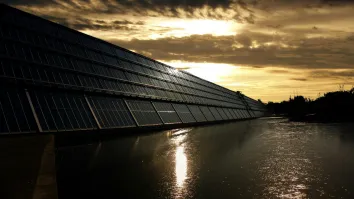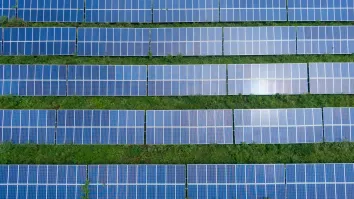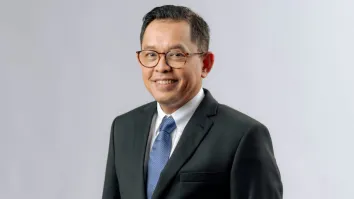Carbon Capture and Storage: The bold path forward for ASEAN
By Aldilla Rakhiemah and Lintang Ambar PramestiFossil fuels make up 83% of ASEAN energy mix. With energy needs expected to triple by 2050 compared to 2020 levels, the urgency for a low-carbon transition is clear. Nine ASEAN countries have committed to reaching net zero or carbon neutrality by mid-century.
Unlike some developed and emerging countries, ASEAN’s gross domestic product (GDP) growth and CO2 emissions have risen in tandem due to a reliance on fossil fuels as a dependable and affordable energy source. Between 2005 and 2022, energy consumption and greenhouse gas emission has grown by 3% and 4% respectively, surpassing the global average of 1%, surpassing the global average of 1%.
Carbon capture and storage (CCS) technologies capture carbon emissions and store them permanently in geological formations. When the captured carbon is instead utilised for various applications, it is referred to as carbon capture and utilisation (CCU). The combination of both processes is known as carbon capture, utilisation, and storage (CCUS).
These technologies are aiming to bridge the gap between current energy practices and a sustainable future by implementing a thoughtful use of fossil fuels whilst decreasing carbon emissions.
Southeast Asia’s industrial landscape and the role of CCS
The region's industrial landscape heavily relies on coal and natural gas, especially in cement and steel. These industries require high fuel combustion temperatures, which are difficult or impossible to replicate with electricity, whilst some sectors also produce CO2 as part of their fundamental chemistry.
The region, particularly Indonesia, is poised to become one of the top three global hubs for heavy industry, due to its advantageous geographical location, rapid influx of Foreign Direct Investment, relatively low labour costs, and substantial market potential. However, the heavy industry accounts for 15% of CO2 emissions worldwide, and in ASEAN, they generate 20% of energy-sector emissions.
Alongside improvements in energy efficiency, CCS emerges as one of the few scalable solutions available for these hard-to-decarbonise sectors, capable of reducing emissions by up to 90%. Reports suggest net-zero emissions in these industries without CCS may be impossible and, at best, more expensive.
CCS and Renewable Energy: Complementary roles
CCS and renewable energy each fulfil essential, yet distinct roles within the broader framework of the energy transition. CCS can provide dispatchable power that operates flexibly at lower loads, not only to complement output from intermittent renewables but also to facilitate increased capacity of renewables on the grid. It provides necessary security of supply and grid-stabilising services. On the other hand, renewable energy is vital for achieving sustainability goals and reducing dependence on fossil fuels over the long term.
In line with this, the production of low-carbon hydrogen via coal or natural gas with CCS stands as the most cost-effective solution in regions lacking renewable resources. This method not only aligns with the urgent need to enhance hydrogen production from 70 million tonnes to 425-650 million tonnes per annum by mid-century but also supports net-zero emissions where direct electrification is challenging.
ASEAN's unique opportunity through regional cooperation
ASEAN has a unique opportunity to lead in CCS technology, viewing climate change as a green investment opportunity rather than a challenge. Many have incorporated CCS in their climate strategies, including Indonesia’s Long-Term Strategy for Low Carbon and Climate Resilience 2050, Malaysia’s Net-zero Energy Transition Roadmap, Thailand’s Long-Term Low Greenhouse Gas Emission Development Strategy, Vietnam’s National Strategy on Climate Change 2050, and Singapore’s Long-Term Low-Emission Development Strategy 2020.
Implementing CCS requires substantial investment. ASEAN can reduce costs and risks through regional cooperation, knowledge sharing, technology transfer, and joint R&D. Standardising regulations and sharing best practices can streamline permitting and approval, accelerate project development, and optimise carbon transport and storage.
Interconnected CCS hubs can cut costs via economies of scale, making CO2 transportation and storage more affordable and appealing to investors, whilst also supporting the regional blueprint towards energy cooperation under the ASEAN Plan of Action for Energy Cooperation. Cross-border CO2 movement allows high-emission nations with limited storage to partner with those with ample capacity. A prime example is shown by Singapore-Indonesia LOI, building on Indonesia’s 2024 CCS regulation allowing 30% of storage capacity for foreign carbon.
Investments in CCS projects in Southeast Asia, though averaging nearly $1b annually, can stimulate economic growth and create diverse employment opportunities. The ILO notes that while the Paris Agreement may displace jobs, it also creates global employment opportunities. CCS, however, supports a just transition, by enabling industries to contribute economically while advancing towards carbon neutrality.
Addressing challenges of CCS
The adoption of CCS in ASEAN faces unique challenges due to the region's diverse economic and geological conditions. High initial costs and regional carbon pricing caps that often fall short of effective levels hinder the deployment of CCS technologies. To overcome these financial barriers, ASEAN countries should explore innovative financing models and foster international collaboration.
Technologically, ASEAN countries lag in developing CCS capabilities, with most still in the preliminary stages lacking pilot projects and the necessary expertise. This innovation gap necessitates increased research, capacity building, and knowledge sharing.
Policy support plays a crucial role in accelerating CCS adoption. Whilst countries like Indonesia and Malaysia have made significant strides with legal frameworks, not all ASEAN countries have fully developed policies. However, there is a growing movement towards implementing carbon pricing mechanisms which are crucial for mitigating the high costs of CCS.
Whilst geological storage of CO2 provides a secure climate change mitigation option, it still faces risks, especially during the initial phase of injection. Norway’s experience with Sleipner and Snøhvit CCS projects highlights the need for accurate seismic, well log, and other geological data, as well as dedicated regulations on MRV to ensure long-term safety and accountability, especially for ASEAN regions which are susceptible to natural disasters.
The absence of a unified international agreement on CO2 cross-border transport, coupled with storage destination countries like Indonesia, Malaysia, and Thailand not being parties to the London Protocol, complicates compliance with environmental standards. Effective cross-border CCS projects must navigate these complexities and align with the stringent environmental safeguards.
In light of these opportunities and challenges, ASEAN Centre for Energy (ACE) is presently developing CCS Deployment Framework and Roadmap to assess the current situation and strategically plan the short-, medium-, and long-term actions that will be necessary to achieve successful CCS deployment in ASEAN.
Recognising the urgency of discussions, collaboration, and knowledge sharing amongst ASEAN Member States and international CCS practices, ACE, in partnership with the Global CCS Institute, have organised three series of the Southeast Asia CCS Accelerator (SEACA) Workshop. This workshop brings together participants from government, public and private sectors, research institutions, and more. The latest series in August 2024 focused on discussing the transnational Asian CCS value chain.
The transition to a low-carbon future requires more than just CCS. It demands improvements in energy efficiency, the adoption of renewable, and the development of alternative materials and production processes. A comprehensive approach which integrates CCS is essential for achieving substantial emissions reductions and ensuring a sustainable, economically viable energy future for ASEAN.


















 Advertise
Advertise






